September 11 featured a large joint exercise at Pravdinsky, representing the main tenets of maneuver defense. Air defense, EW, and tactical aviation units practiced intercepting enemy cruise missiles, drones, and penetrating strike aircraft. Airborne units were training and positioning for more active phases of the exercise coming up. A panoply of interesting reconnaissance and targeting activities, using KRUS Strelets to enable recon-fire/recon-strike loops. Northern Fleet forces sortied a SSGN and SSBN, conducting simulated fires against enemy surface action groups. Meanwhile the Baltic Fleet ran an amphibious landing exercise, and live fire exercises with CDCMs.
I took a break on Sunday which put me a bit behind, but got to see my football team lose their first game of the season. Of course that was more of a dynamic event with a motivated OPFOR.
Special thanks to Konrad Muzyka who helped me put some of these items together, it always easier with another person looking.
VKS Аеrospace Forces
Tu-22M3 and Su-34 aircraft conducted bombing runs on a training run near Smolensk (Dorogobuzh?). They bombed ground targets, denoting armored vehicles, concrete shelters, camouflaged and fortified underground command posts. Ground targets were struck from a height of around 1,000 m. Air cover provided by Su-30SMs. Altogether 20 long-range and tactical aviation aircraft were involved in this operation. (sadly no pictures)
After their deployment to operational airfields in the Ryazan region, Su-35s were sortied to intercept 10 air targets here played by Su-30SMs. The latter were detected by radio-electronic troops of the WMD. Before the OPFOR Su-30SMs entered a zone of air defense responsibility, they were ‘engaged’ by simulated electronic launches at a distance of over 100 km.
Mig-31BM units belonging to 6th AAD Army intercepted enemy aircraft at medium altitudes. These were simulated by Su-24M bombers operating as the opposing force. They then detected a group of enemy drones which could not be identified on IFF. The Migs broke up into pairs to engage enemy drone systems, preventing a hypothetical strike against Russian powerplants.
VDV Airborne – Strugi Krasnye
This proved a really interesting battalion level exercise on 10th/11th. 76th VDV division deployed 600 paratroopers with 50 pieces of equipment. Air cover provided by Su-30SMs, Ka-52s, and Mi8AMTSh helicopters, along with air control with A-50U AWACS and Il-22-SURT. Paratroopers seized an enemy airfield, marched to another mission 100km away. on their way they also practiced overcoming minefields. Looks like they had 50 BMD-4M, BTR-MDM Rakushka, and some lighter vehicles as well, along with air defense systems (Stela-10MN, ZU-23-2, Igla, Verba). Part of the activity included the column practicing repelling an enemy attack.
I’m going to dedicate more time to this because we found a great map discussing the exercise, and after staring at it for some time, decided it was worth unpacking this a bit more. Konrad spent more time on this on his blog: https://rochan-consulting.com/wp-content/uploads/2021/09/Strugi-Krasnye_VDV_map_17Sep21.pdf
The 51st parachute regiment & 234th air assault regiment are from 106th division, while the 237th air assault are from 76th division. 51st is holding left flank, 237th is holding far right, a reinforced 234th is holding the main line in the center and defending against an attack on the right. The exercise is using stand in numbers under the system of exercise number -10 = actual unit number i.e. 61st – 10 = 51st regiment.


Separately, 106th VDV from Tula were airlifted by military transport aviation (VTA) from Ryazan region to Ulianovsk. Earlier at Dyagilevo airbase the 106th had assembled a full BMD-4M battalion for loading aboard transport aircraft to be paradropped. They will be doing a drop with 300 troops and more than 30 BMD vehicles at Zhitovo, using 23 x Il-76MD.
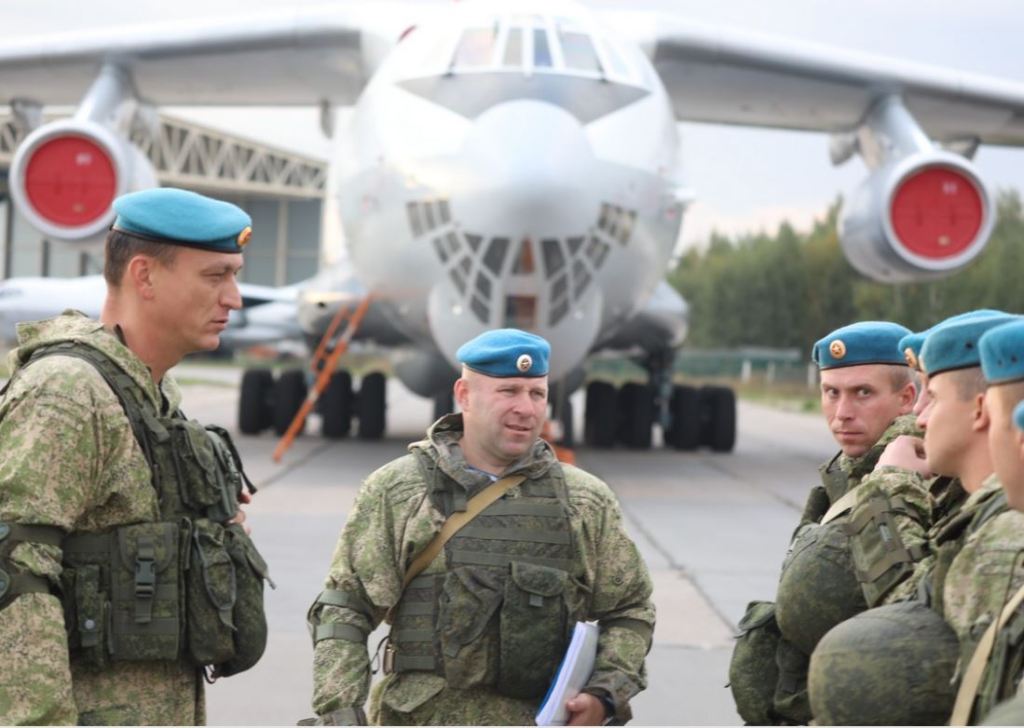
At Savasleika in Nizhny Gorod region, the 31st Air Assault Brigade which is based in Ulianovsk, began practicing rappelling from helicopters. This unit is training with using Mi-8AMTSh to airlift D-30 howitzers, and new ground mobility vehicles, Sarmat-2, which packs 3 people, 12.7mm MG and AGS-17 30mm Grenade launcher. 31st usually experiments with force structure and new tactics, air lifting equipment, and the like.
6th CAA at Mulino – Military Police destroyed an enemy diversionary group which attempted to penetrate the army’s command post. OPFOR was being played by Spetsnatz units, their mission was to sabotage the enemy command post and place mines in the area. Defending forces consisted of security and MPs, using blank rounds and smoke charges to simulate combat conditions. Snipers belonging to a motor rifle detachment practiced stopping light enemy vehicles and armor with ASVK and SVD rifles, firing at the engine blocks. They then used KRUS Strelets to relay the coordinates of enemy units to supporting artillery.
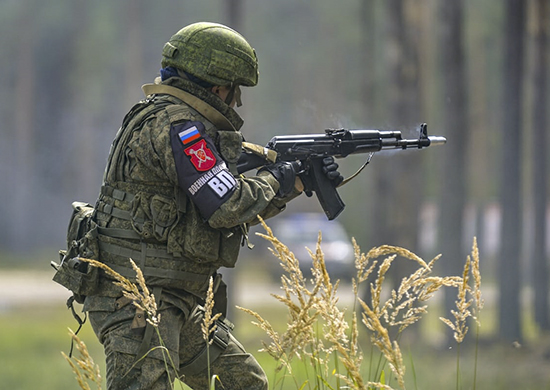
Radio-electronic warfare (EW) troops practiced disabling groups of enemy drones, forcing 20 UAS to land. In this exercise enemy drones planned to conduct strikes against military infrastructure with the aid of UCAVs. Radar units detecting incoming drones at different altitudes, then relayed their coordinates to those operating Borisoglebsk-1 and Zhitel EW systems. EW units then disrupted drone communication and navigation systems.
At Luzhsky – Western MD rotary aviation (most likely army aviation units based in Leningrad region) practiced a new tactic for destroying enemy forces with Mi-8, Mi-28N and Ka-52 helicopters. Pairs of helicopters would predeploy and sit masked on cleared positions in the forest. They then would await enemy forces to break through, takeoff from their hidden positions, and destroy targets (this one is new to me). They’re describing hit and run tactics using terrain masking.
Ashuluk training range – S-400s and Pantsir-S1 units belonging to Western MD are training at this range in repelling aerospace attack, namely defending against MRAU (Massed Missile-Aviation Strike), destroying cruise missiles simulated by target imitators, enemy drones, and tactical aviation. Air defense units will work in concert with tactical aviation.
Pravdinsky and Khmelenvka – Drone units using Orlan-10, Forpost are being used extensively as part of the exercises taking place in Kaliningrad, along with UGVs like Platforma-M. These are being employed to find and fix targets, conduct battle damage assessment, armed reconnaissance, and also to clear paths through minefield.
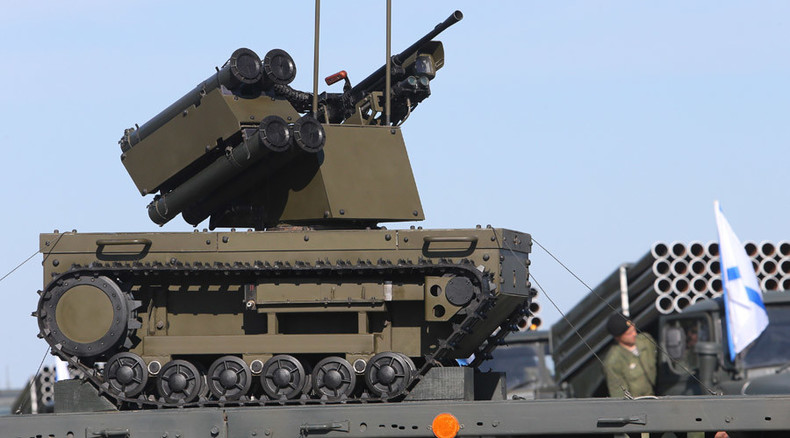
At Pravdinsky, there was a large exercise integrating units from the Army Corps, VKS air defense, and the fleet’s land based naval aviation components. With support from artillery and aviation they fortified a defensive line with the goal of then conducting a counterattack. The scheme includes ‘complex’ defeat of an opponent’s forces, which in practice means a set of coordinated strikes from different elements of the joint force being deployed. Ground forces used self-propelled artillery (2s3 Akatsiya) and Uragan 220mm MLRS, also BM-21 Grad, in conjunction with drones for ISR. Su-30SMs conducted strikes against enemy targets in depth, such as command posts, logistics dumps. The fleet’s Su-24s and Su-30SMs struck with unguided FAB-250s.
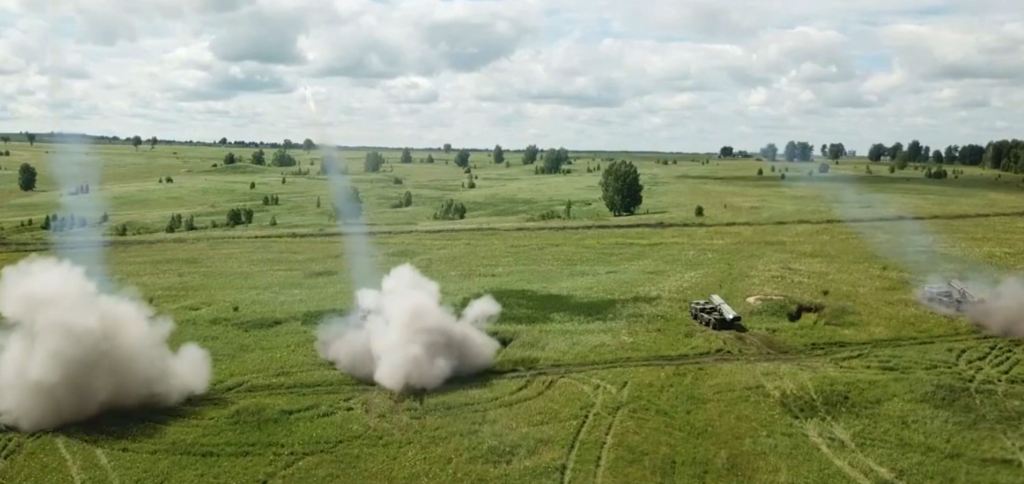


Meanwhile a pair of Su-27s assigned to the Fleet’s tactical aviation units at Chkalovsk practiced intercepting enemy cruise missiles with air-to-air missiles. Not sure if it was part of the same exercise, but sounds like this was all one large activity.
The use of airpower then set conditions to transition from defense to counteroffensive with motor rifle (BMP-3) and armor (T-72B3), thereby preserving the force. Artillery fires in this exercise were further coordinated with operations by Mi-24 helicopters operating at low altitudes. To simulate enemy fires they used flares, and target imitators. PVO-SV units practiced air defense with Tunguska and Igla systems. Countermine systems also engaged using UR-77 to blast corridors through enemy mine fields. A detachment was airlifted by helicopters, presumably to the rear or flanks of the opposing force. About 300 pieces of equipment, 5000 troops, and 20 aircraft are involved in this exercise at Pravdinsky. The description in this exercise reflects an increasing focus on maneuver defense in Russian military discussions, and lays out its central precepts – engaging a superior force to degrade them, retreating to reserve lines to avoid being pinned, massing artillery and airpower against them as they concentrate, which sets the conditions for a counteroffensive – and preserving the force with minimal losses.
Belarus
Brest training range – Russian forces together with Belarusian units began digging in to prepare their positions against air attack. They trained in repelling enemy reconnaissance groups, snipers prepared positions, and others setup security posts. Also at Brest there’s a whole discussion about topographers belonging to the tank regiment deployed there using systems like Kaleidoscope (and 1T134M) to create full 3D maps of the area, with accurate measurements. This helps artillery units and those in predetermined positions have a much better sense of the area and fire with greater accuracy.
Recon units penetrated behind enemy lines, and employed KRUS Strelets targeting systems. Their goal was to find enemy armor concentrations, command and control points, fuel and ammo dumps, along with railroad hubs for unloading equipment. With Strelets they were able to relay coordinates to supporting artillery and aviation for strikes.
Elements of the 96th Reconnaissance Brigade deployed three different types of reconnaissance drones (namely quadrocopters) to ascertain the positions of an enemy force. This allowed them to make a detailed map of the terrain of the area where the conditional enemy forces were located. Quadrocopters were flown to 100 meters, which allowed them to deploy without detection. Data was then transmitted to fire systems to destroy targets.
Elements of a Belarusian SOF unit (unclear which) returned home from Ivanovo where they practiced with the 98th Airborne Division. Belarusian SOF unit conducted a riverine operation combing with seizing an island. The attack on the island (retaking it from diversionary groups which had seized it), was carried out from several directions. The first group of divers were deployed to a splashdown area by a Mi-8MTV-5 helicopter. The second group landed on special wing-type parachutes and immediately entered into a battle. Some ‘militants’ tried to escape from the island in a motorboat, but they were destroyed using a combat drone.


Northern Fleet – As part of its Arctic expeditionary group NF practiced destroying an enemy surface action group in the Barents. Ships involved include Sovremenny-class destroyer Admiral Ushakov, Gorshkov-class frigate Admiral Kasatonov, coastal defense cruise missile batteries fielding Bal (SSC-6) and Bastion-P (SSC-5). CDCMs deployed from their bases to firing positions along the Kola peninsula. Bal CDCMs fired together with Admiral Ushakov against targets 100km from the coast. Meanwhile Admiral Kasatonov, and Bastion armed CDCM units, conducted simulated electronic fires against naval targets, and worked on coordinating the targeting process.
Two nuclear powered submarines got underway, K-266 Orel (Oscar-II), and K-51 Verkhoturye (Delta IV). PDSS units helped protect the submarines against enemy diversionary groups during their departure. Minesweepers conducted counter-mine operations to help get the submarines clear, forming two minesweeping groups including Elnya, Soloevetskiy Yunga, Yadrin, and Kotelnich. Also looks like a NF Mig-31BM intercepted a Norwegian P-3S Orion over the Barents, most likely there to conduct intelligence on Russian submarines departing from their bases.
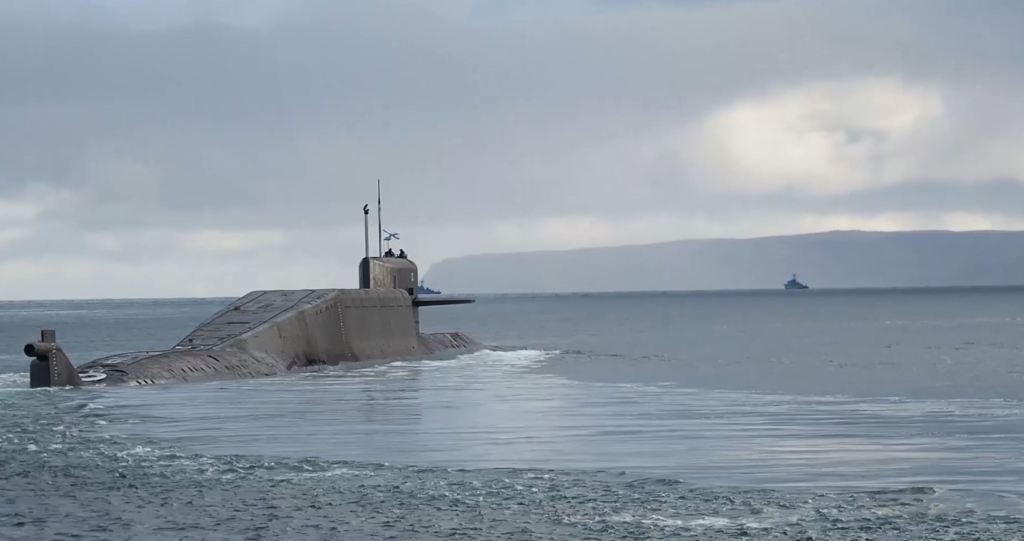
Baltic Fleet – A battalion of Bal CDCMs conducted simulated electronic strikes against an enemy amphibious landing groups. The training involved deploying to launch points, setting up and camouflaging equipment, reload drills, and securing the launch site.

Elements of the Baltic Sea, and Northern Fleet conducted a bilateral amphibious operation on the Khmelevka Training Range. Respectively, these are the 336th and 61st Naval Infantry Brigades. The latter has been training with the Baltic Sea Fleet naval infantry throughout the entire August. The exercise was observed by the Commander-in-Chief of the Navy, Admiral Nikolai Evmenov. The 61st Naval Infantry Brigade was first deployed to seize a bridgehead and ensure that equipment landed for a deeper an offensive into unfamiliar territory. The 336th Naval Infantry Brigade was tasked with defending beach areas.
A detachment of fire support ships first delivered an artillery strike along the coast to suppress 336th artillery positions. Engineers were then brought by Raptor fast-attack craft first to clear and mark lanes for follow on forces. After the engineers cleared a lane, several BTR-80/82 vehicles were deployed to the shore from the four Project 775 large landing ships. In the meantime, Evgeniy Kocheshkov Project 1232.2 Zubr LCAC with Nona 120mm mortars and R-149MA1 command and staff vehicles.
Support activities
Specialists in EW provide cover for command posts and important industrial facilities, along with electronic support functions like reconnaissance and identifying transmitting targets. They will emphasize counter-UAS, using experience gained dealing with enemy drones in Syria. There are approximately 300 EW specialists and 50 pieces of equipment involved in Zapad, including Krasukha-S4, Krasukha-2.0, Zhitel, and Borisoglebsk.
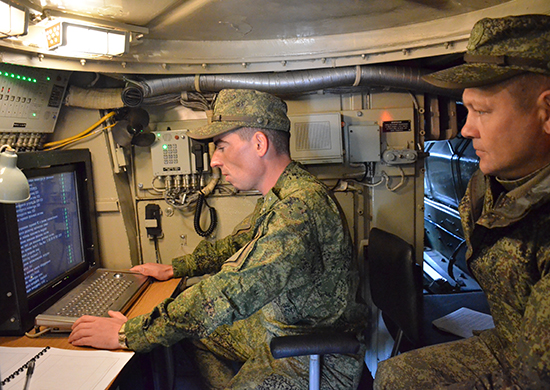
Combat service support (MTO) components will practice repair, evacuation, providing field service, etc. A repair and maintenance battalion has been deployed from Western MD’s independent MTO brigade. Prior to the active phase of training, MTO units will train in repairing vehicles, using 20 different types of equipment (KET-L, BTS-4, B3EM-K, TRM, MTO-UB-2). Also mobile repair stations with cranes, for example BAKM 1040 BK, which can lift 4.95tons. More footage to follow later in the exercise.


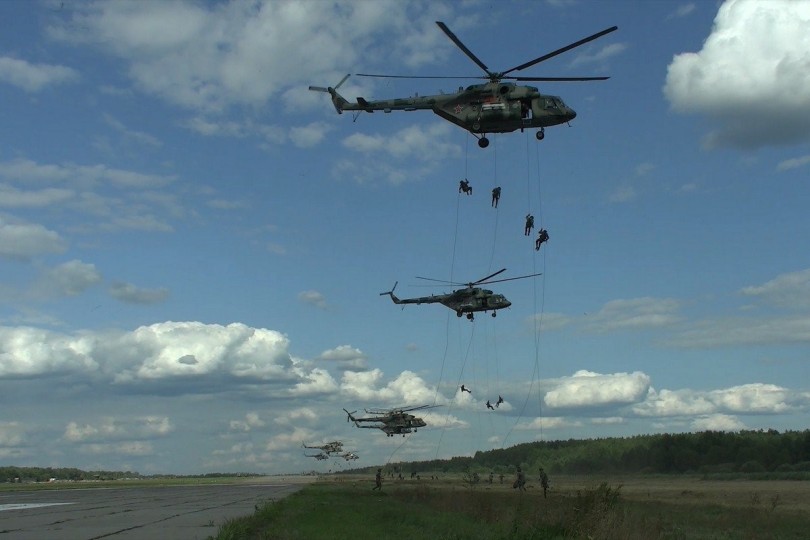
The extent, scope and scale of this exercise and the C2 involved just to follow it is far in excess of anything NATO has practiced in decades. It is closer to exercises I remember from the late 80s. Again I warn that we are thinking far too simply and shallowly about our enemy. Just to put on this show takes some serious thinking from some clearly capable and hard thinking commanders.
LikeLike